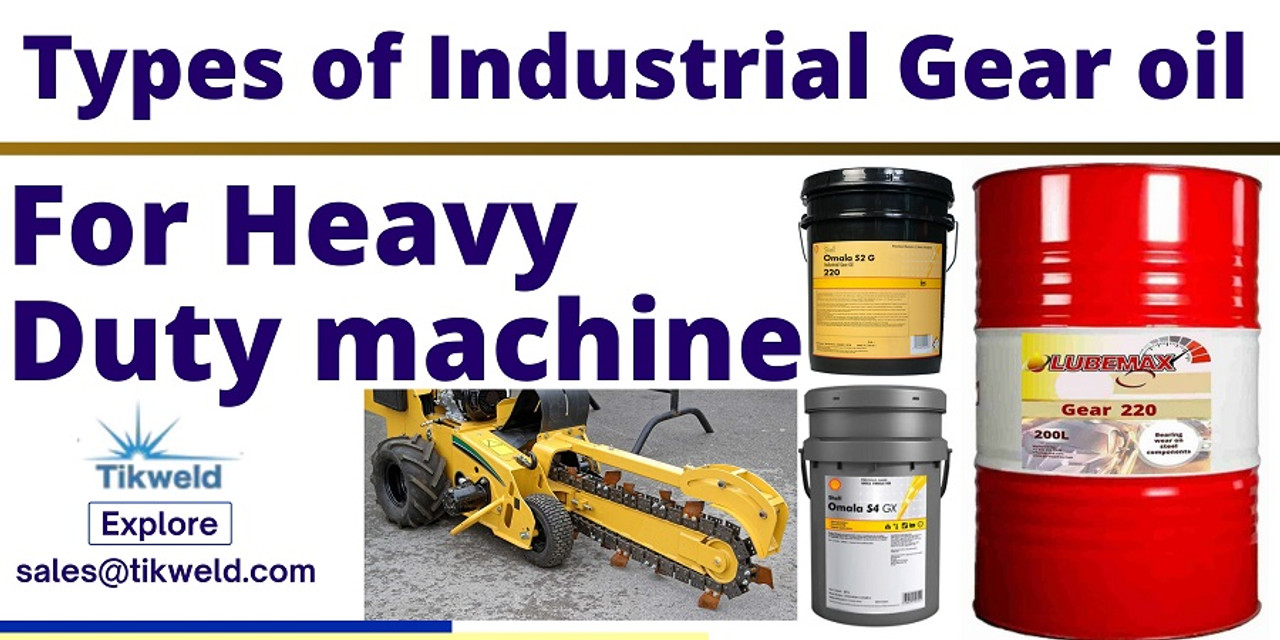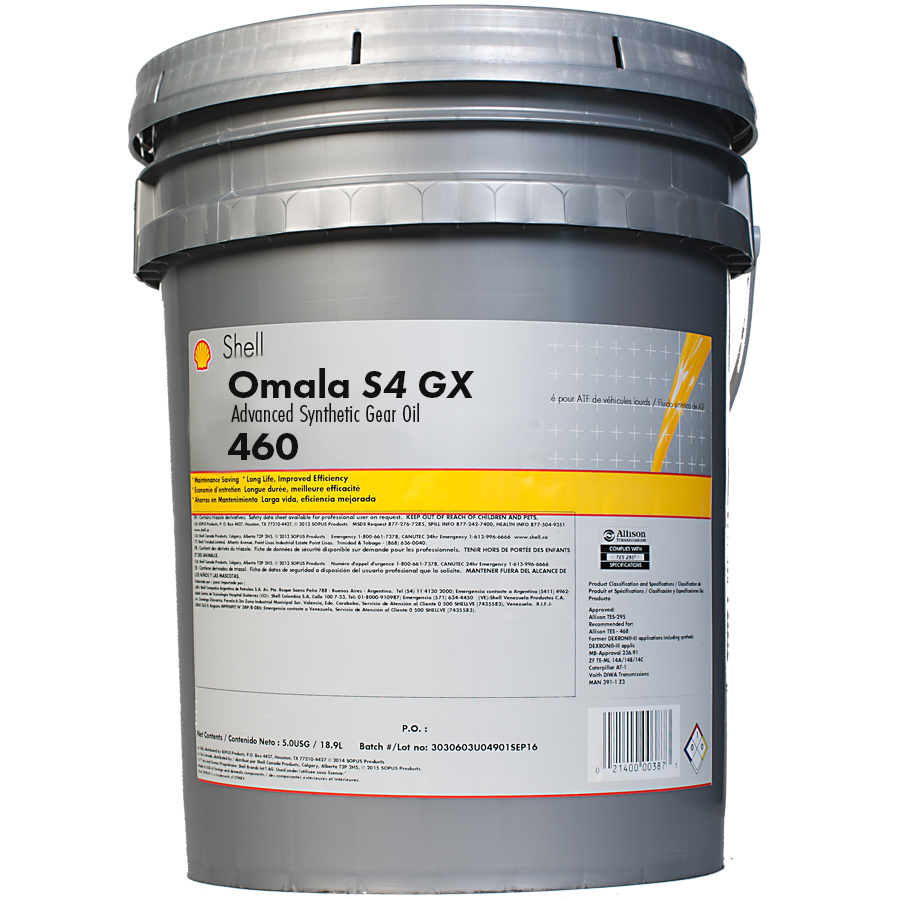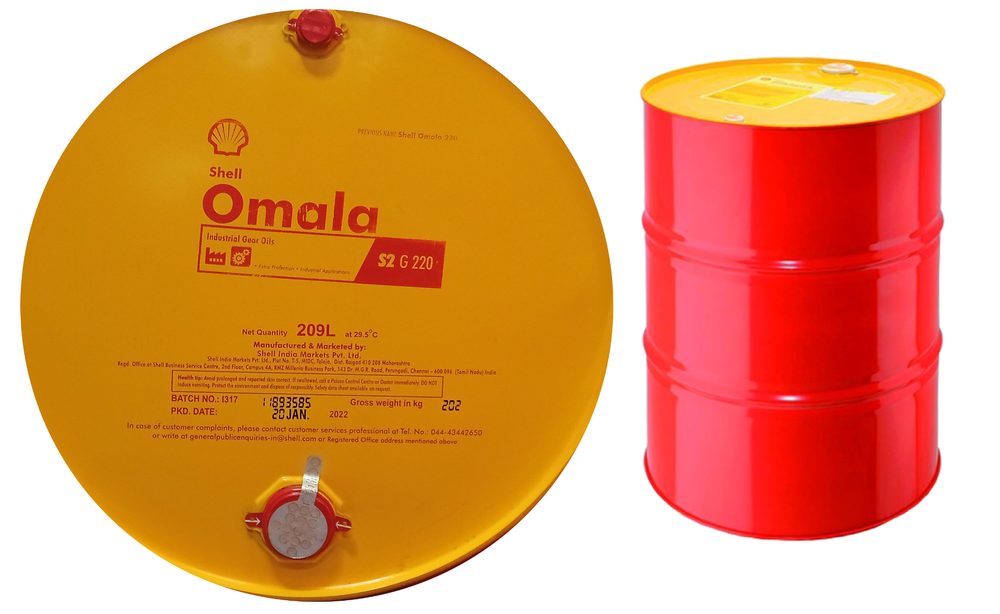Types of Industrial Gear oil for Heavy duty machine
Introduction
Industrial Gear oils are lubricants designed to protect gears, bearings, and seals in all types of enclosed gear drive with circulation or splash lubrication systems. High-quality Extreme pressure or mineral base oils perform well in most applications.Extreme pressure oils typically have higher pressure-viscosity coefficients than common synthetics, allowing for greater film thickness at a given operating viscosity. There are, however, situations where synthetic base oils are preferable.
Many synthetic base gear oils have a greater inherent resistance to oxidation and thermal degradation making them preferable for applications with high operating temperatures and, in some cases, allowing for extended service intervals. Additionally, synthetics gear oils perform better in machines subjected to low ambient temperatures due to their high viscosity index and low pour points.
Gear oils are formulated for outstanding extreme-pressure characteristics,varying temperatures, and load-carrying properties in a broad range of industrial equipment. Choosing the right gear oil can help provide slip-free power transmission even at high speed and eliminate pitting from forming in the contact region within the mechanisms of the respective machine.
Read more...Choosing the Right Gear Oil: Types, Benefits, and Applications
TYPES OF INDUSTRIAL GEAR OIL FOR HEAVY DUTY MACHINE
If you are looking for the best gear oil for your heavy duty machine it is important to consider brands such as Lubemax, Shell, Liqui moly and total etc. There are four types of industrial gear lubricants used in the lubrication of industrial gear drives; Synthetic gear oils, Extreme pressure (EP) gear oils, compounded gear oils, synthetic gear oils, and Rust and oxidation (R&O) inhibited oils.
Synthetic Gear oil
Synthetic gear oils are primarily used in spur, straight bevel, spiral bevel, helical, herringbone, and hypoid worm-enclosed gear drive applications whenever petroleum-based industrial gear lubricants have reached their performance limits. Synthetic gear lubricants can contain R&O-inhibited additive systems or antiwear or EP additives.
Shell Omala S4 GX Advanced Synthetic Industrial Gear Oil
Synthetic gear lubricants offer several advantages over conventional oils in applications with very low or high ambient and/or operating temperatures, such as enclosed gear drives. These advantages include:
- Improved thermal and oxidation stability
- Improved viscosity-temperature characteristics (high viscosity index)
- Very good to excellent low-temperature characteristics
- Lower volatility and evaporation rates
- Reduced flammability (dependent upon the type of synthetic base used)
- Improved lubricity at mesh temperatures above 185°C
- Resistance to the formation of residues and deposits at high temperatures
- Improves efficiency due to reduced tooth-related friction losses (low traction coefficients)
- Lower gearing losses due to reduced frictional losses (low traction coefficients)
- Extended oil drain intervals
- Reduced operating temperatures, especially under fully loaded conditions
- Reduced energy consumption
Rust and Oxidation Inhibited Gear Oils
Rust and oxidation-inhibited gear lubricants are designed to withstand various conditions, including extreme temperatures. These lubricants can help keep gears working properly in a wide range of settings, from -5°F to 250°F (-15°C to 121°C). Rust and oxidation-inhibited gear lubricants are commonly used in high-speed single helical, herringbone reduction gear sets with pitch line velocities greater than 3,500 feet/minute (17.5 meters/second) are subjected to light to moderate loads. They are also used to lubricate spur, straight bevel, and spiral bevel gear drives subjected to light loads.
R&O-inhibited industrial gear lubricants are ideal for lubricating bearings if both the gears and bearings are lubricated from the same system. However, for best results, it is recommended that either splash or circulation lubrication systems constantly relubricate the gear teeth. This is because R&O-inhibited industrial gear oils do not adhere well to the surface of gear teeth. R&O-inhibited gear oils can effectively cool the gear mesh and flush the tooth surfaces of wear particles or debris. They can also be easily conditioned with filters and heat exchangers for consistent temperature and cleanliness.
Extreme Pressure Gear Oils
Extreme pressure gear lubricants also known as Mineral based oil is designed for use with gear drives that are subjected to high loads, moderate to high sliding conditions, and high power transmission. This type of lubricant can help extend the life of your gear drive and keep it running smoothly. They can be used with spur, straight bevel, spiral bevel, helical, herringbone, and hypoid-type gear drives.
EP (extreme pressure) gear lubricants are designed for use in systems where the gears and bearings are lubricated from the same system or in heavily loaded worm gear drives. These lubricants contain additives that can chemically react with other substances in the system. This can potentially cause damage to the gears or bearings. It is important to know this potential danger when using EP gear lubricants.
While EP gear lubricants can extend the life of your components, they can also contain active chemistries that are corrosive to brass or bronze. If you’re considering using this type of lubricant in an application where these metals are present, it’s important to consult with the supplier to ensure it’s safe.
Shell Omala S2 G 220, Extreme pressure Industrial gear oil
EP gear lubricants can contain suspended solid lubricants like graphite or molybdenum disulfide. These solids are added to the industrial gear lubricant to improve its load-carrying capabilities. Be careful with fine filtration if you’re using EP gear lubricants with solid lubricants. It can remove the solid lubricants, which you don’t want.
EP gear lubricants are best used when the solid lubricants are colloidally suspended and have a particle size no greater than 0.5 microns. You should never use EP gear lubricants in industrial gear drives that use internal backstops, such as those found on conveyor belts, or in the lubrication of cooling tower gear drives that employ ratchets.
Industrial gear lubricantsare designed to perform well under a variety of conditions, including different gear sizes and speeds, as well as ambient temperatures ranging from -5°F to 250°F (-15°C to 121°C). These lubricants do not adhere to the surface of the gear teeth, so it is best to use a splash lubrication or circulation lubrication system that will constantly relubricate the teeth. They can effectively cool the gear mesh and flush the tooth surfaces of wear particles or debris.
EP gear lubricants can be easily conditioned with filters and heat exchangers for consistent temperature and cleanliness. EP gear lubricants can help to extend the life of an enclosed gear drive, but they cannot make up for poor design or mechanical issues. If an industrial gear drive is poorly designed or nearing the end of its useful life, the EP gear lubricants will only delay the final failure for a short time.
LubeMax Industrial EP Gear Oil 150 200L
Compounded Gear Oils
Compounded gear oils are designed to create the best possible lubrication for enclosed worm gear drives. The high sliding action of the gear teeth requires a friction-reducing agent to reduce heat and improve efficiency. The surface active agent helps prevent sliding wear and provides the lubricity needed to reduce sliding wear. This agent is usually a fatty or synthetic fatty oil.
These gears' upper operating temperature limit is 180°F (82°C). They can effectively cool the gear mesh and flush the tooth surfaces of wear particles or debris. For best results, the gear teeth should be constantly lubricated by either splash lubrication or circulation lubrication systems because R&O-inhibited industrial gear oils do not adhere well to the surface of the gear teeth.
Most worm gear drives normally require an ISO 460 or 680 compounded oil and, in some cases, an ISO 1000. The viscosity grade required depends upon the worm gear drive’s speed and operating temperature. Generally, the lower the worm’s gear speed, the heavier the viscosity grade.
Lubemax Industrial gear oil 460
Comparison of Industrial Gear Oils for Heavy-Duty Machinery Applications
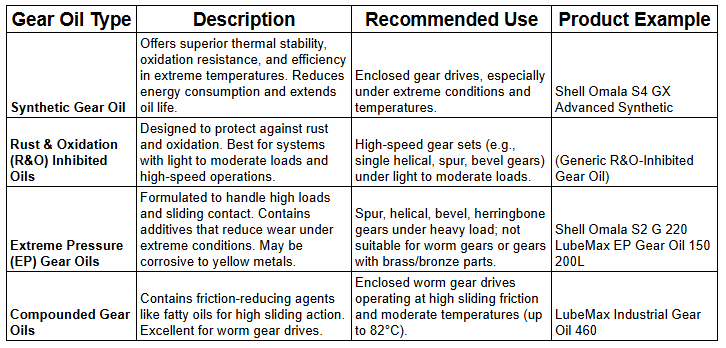
WHAT TO CONSIDER WHEN CHOOSING THE RIGHT GEAR OIL
A gearbox's maximum operational reliability depends on operating materials and choosing the right lubricants during all design phases as integral structural elements. Ideally, inspecting and analyzing equipment on-site before recommending any lubricant is the best practice. Many manufacturers provide guidelines for lubricant selection but fail to examine some crucial elements.
Factors that play an important role in selection:
- Gearbox type: dimensions, the metal used for teeth, sliding properties and gear ratio, open or closed casing
- Operating conditions: depending on the load, vibration, and shock levels, anti-wear and extreme pressure properties
- Service oil temperature: very low, moderate (+20°C and +80°C), hot (+80°C), and extreme (+120°C)
- Machine environment and maintenance conditions
Once these factors are accounted for, the following criteria for gear oil selection come into the picture:
VISCOSITY:
This factor is of utmost importance as it determines the formation of the lubricant film. It determines the film thickness between interacting surfaces at a given speed and load. It is difficult to ascertain the 'load' for most viscosity selection methods. Hence the 'load' is assumed, and 'speed' becomes the determining factor.
The degree to which viscosity changes with temperature depends on the base oil, such as mineral oil, polyalphaolefin, ester, and polyglycol, as well as on the VI improver additives contained in the lubricant.
One of the most common methods for determining viscosity is the ANSI (American National Standards Institute) and AGMA (American Gear Manufacturers Association) standard ANSI/AGMA 9005-E02. Load, viscosity index, and the pressure-viscosity coefficient of the lubricant are the factors used in this method.
ADDITIVES:
There are many types of chemical additives mixed into base oils to enhance the properties of the base oil, to suppress some undesirable properties of the base oil and possibly to impart some new properties.
Additives typically make up about 0.1 to 30 percent of the finished lubricating oil, depending upon the target application of the lubricant.
Lubricant additives are expensive chemicals, and creating the proper mix or formulation of additives is a very complicated science. It is the choice of additives that differentiates a turbine (R&O) oil from a hydraulic oil, a gear oil and an engine oil.
Rust and Corrosion Inhibitors
These additives reduce or eliminate internal rust and corrosion by neutralizing acids and forming a chemical protective barrier to repel moisture from metal surfaces.
Some of these inhibitors are specific to protecting certain metals. Therefore, an oil may contain several corrosion inhibitors. Again, they are common in almost every oil and grease. Metal deactivators are another form of corrosion inhibitor.
Anti-corrosion properties of gear oils are assessed individually for corrosion protection on steel and copper.The presence of water due to leakage or condensation can lead to a combination with ambient oxygen resulting in rust on inadequately protected steel surfaces. Additives that contain polar rust inhibitors form a compact and protective water-repelling layer. R&O gear oils perform well in chemical stability, corrosion prevention, and foam suppression,
Extreme Pressure (EP) Additives
These additives are more chemically aggressive than AW additives. They react chemically with metal (iron) surfaces to form a sacrificial surface film that prevents the welding and seizure of opposing asperities caused by metal-to-metal contact (adhesive wear).
They are activated at high loads and by the high contact temperatures that are created. They are typically used in gear oils and give those oils that unique, strong sulphur smell. These additives usually contain sulphur and phosphorus compounds (and occasionally boron compounds).
They can be corrosive toward yellow metals, especially at higher temperatures, and therefore should not be used in worm gear and similar applications where copper-based metals are used. Some chlorine-based EP additives exist but are rarely used due to corrosion concerns.
Demulsifiers
Demulsifier additives prevent the formation of a stable oil-water mixture or an emulsion by changing the interfacial tension of the oil so that water will coalesce and separate more readily from the oil. This is an important characteristic for lubricants exposed to steam or water so that free water can settle out and be easily drained off at a reservoir.
BASE OIL:
The quality of the base oil is a crucial factor in determining the performance of your gear oil. High-quality Extreme pressure oils perform well in most applications. They typically have higher pressure-viscosity coefficients than common synthetics, allowing for greater film thickness at operating viscosities. There are, however, situations where synthetic base oils are preferable. Gear lubricants based on these synthetic oils have proven to be most effective: polyalphaolefin (PAO), polyglycol (PG), and ester (E).
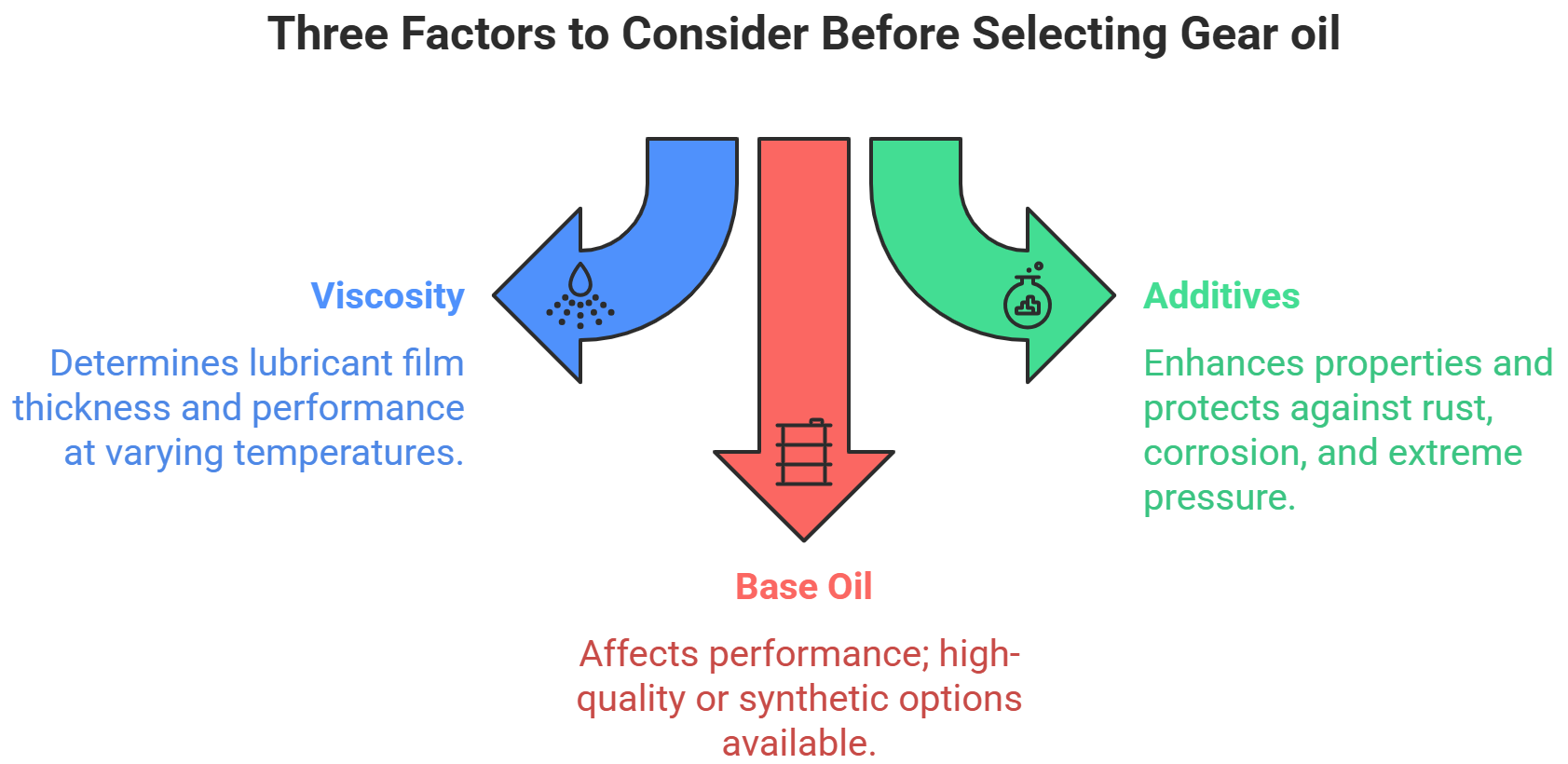
Frequently Asked Question
1. What is gear oil?
Gear oils are fluid lubricants that are used for transmissions, manual gearboxes, differentials, transaxles and transfer cases in machines. It has a highly viscous fluid and often includes organosulfur compounds. These are lubricating oils that protect the transmission and gearbox internal parts from wear and tear.
2. What additives are used in Gear oils?
Various additives are added to the lubricants to enhance the performance of the base oil. For better resistance of the hypoid bevel gears, most gear oils are mixed with many additives such as;
- Extreme Pressure additives (EP)
- Anti-wear additives
- Oxidation inhibitors
- Rust and corrosion inhibitors
- Anti foaming agents
- Pour-point depressants
- Emulsifier
- Demulsifier
3. What is the use of Gear Oil?
The gear system of your car includes a gearbox, propeller shafts, hypoid bevel gears, transmissions, live axle, bearings etc. There are a lot of sliding actions and metal-to-metal contact. Gradually, this leads to excessive heat, internal part damage as well as corrosion. If not properly lubricated, the following problems will occur to the gear system;
- Corrosion
- Scuffing
- Wear Damage
- Pitting of vital drivetrain components
Thus eventually lead to severe damage to the car’s transmission and gear systems of your car. Moreover, it will also hamper your car’s performance and the repair cost will be shattering. This is why regular use of gear oils is a vital component for your car maintenance.
The main function of gear oils is to lubricate transmission, differentials and transfer cases. It protects the crucial internal parts of the gear system against all of the damages above. Additionally, gear oil lubrication helps the system perform smoothly and gives a cooling effect.
4. When should we change gear oil?
Even though it is vital to regularly change the gear oil you use, there isn’t a specific timeline as to when you change it. Your car manual should have the relevant information so it is helpful to check it out. However, it is recommended that you change your gear oil for the following conditions.
For automatic gear transmission: Up to 80,000 km (50,000 miles)
For manual gear transmission: Up to 1,60,000 km (100,000 miles)
Related Articles
Everest Oil Products: Benefits, Applications, and Where to Buy in Nigeria
The Hidden Secrets of Changing Your Gear Oil: Unleashing the Benefits
CONCLUSION
Gear oils and their applications could be tricky to understand however knowing their usages and benefits will help you tremendously when it comes to selecting the right one and when to change them. This will inevitably aid in getting the best out of your machine. Hope this ultimate gear oil guide is useful for you.
Contact our expert at GZ Industrial supplies for Gear oil recommendations

